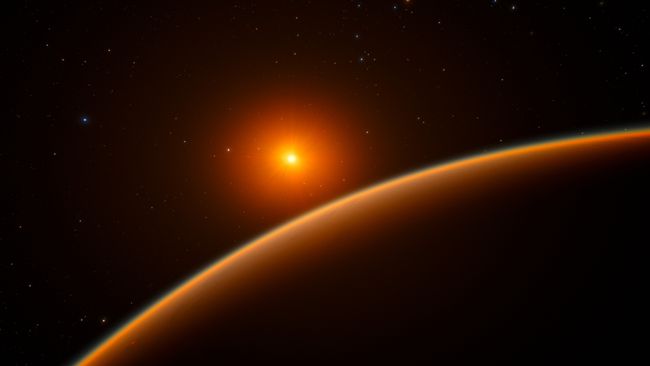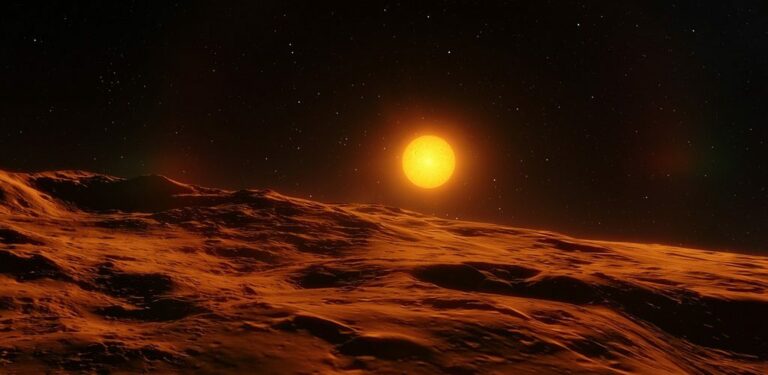Study Discovers Abundance of Life-Sustaining Water on Proximate Exoplanet
If it is verified in the future, it would mark the initial instance of indirectly detecting liquid water on an exoplanet.
A recent study has unveiled that an exoplanet located approximately 50 light-years away from Earth and orbiting a small star could potentially be a water-rich world capable of supporting life. This exoplanet, known as LHS 1140b, resides within the habitable zone of its host star, LHS 1140, situated in the constellation Cetus. Since its discovery in 2017, LHS 1140b has been closely observed by various telescopes.

Initially, these observations led scientists to believe that LHS 1140b was a rocky planet with a diameter 1.7 times larger than Earth. However, a comprehensive analysis of all available data has indicated that LHS 1140b lacks the necessary density to be solely composed of rock. Instead, it is speculated that the planet either contains a significant amount of water, surpassing that of Earth, or possesses a substantial atmosphere consisting of light elements like hydrogen and helium.
At present, researchers are unable to definitively determine which of these two possibilities is accurate. Nevertheless, the James Webb Space Telescope (JWST) holds the potential to shed light on this matter in the forthcoming years. If LHS 1140b does indeed prove to be a water world, it will undoubtedly become the primary target in the quest for extraterrestrial life beyond our own solar system.
According to Charles Cadieux, an astronomy researcher at the University of Montreal and lead author of a new study, the presence of water in its liquid state on a planet within the habitable zone is a fascinating scenario in terms of habitability. This is particularly intriguing considering that the planet is located within the habitable zone, where conditions are suitable for the existence of liquid water.
However, despite the discovery of over 5,500 exoplanets orbiting stars in the Milky Way galaxy since 1992, only a few of them are potentially habitable. Cadieux explains that the most promising system to search for extraterrestrial life has been the TRAPPIST-1 system, which consists of seven Earth-size exoplanets, three of which are located within the habitable zone.
Unfortunately, recent observations by the James Webb Space Telescope (JWST) have yielded disappointing results. It appears that these planets may lack an atmosphere and surface water, making them potentially barren. Cadieux attributes this to the high activity of the TRAPPIST-1 star, which produces frequent flares. The intense activity of the star may have stripped away the planets’ atmospheres, rendering them inhospitable for life.
Cadieux emphasized that the LHS 1140 star, which is not as well-known as TRAPPIST-1, exhibits significantly lower activity. With a size and mass approximately 20% that of our sun, LHS 1140 emits only a minimal amount of energy, just enough to create potentially habitable conditions in a region closer to its surface than the distance between Mercury and the sun. Surprisingly, despite orbiting more than four times closer to its star than scorching Mercury, the planet LHS 1140b is believed to be cooler than Earth.
According to Cadieux, LHS 1140 is considered the second most intriguing exoplanet system in terms of habitability, following TRAPPIST-1. The findings from their study will guide future investigations conducted by other programs.
The researchers, including Cadieux, have submitted an application to study the LHS 1140 system using JWST (James Webb Space Telescope). Their objective is to determine whether the exoplanet possesses an atmosphere rich in hydrogen and helium or if it exhibits a significant presence of water. However, as of now, no observations have been scheduled.
Cadieux explained that if future confirmation is obtained regarding the exoplanet being a water world, they can then model the planet’s climate to ascertain the existence of liquid water on its surface. This would mark the first indirect detection of liquid water on an exoplanet, representing a remarkable discovery.
The study was published in The Astrophysical Journal Letters on Jan. 3.
Do not forget to share your opinion with us to provide you with the best posts !




0 Comments